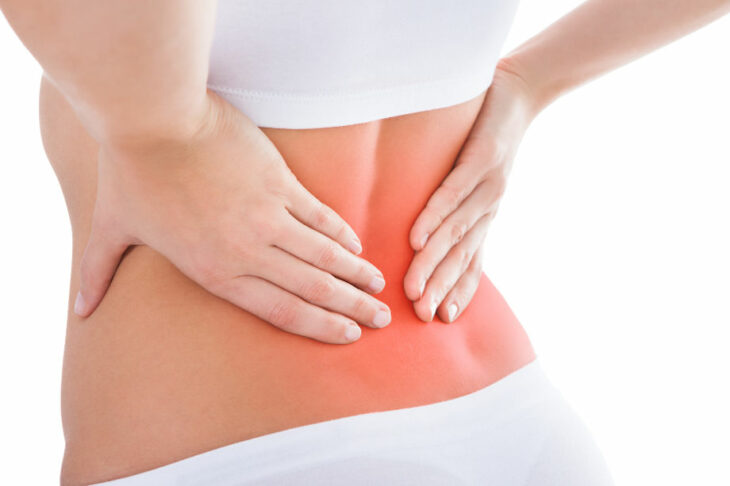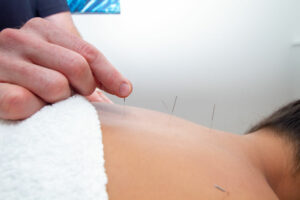Quick Summary
Bulging discs are a common cause of intense and debilitating pain, often affecting the neck and lower back. They may lead to nerve pain, pins and needles, or numbness due to nerve compression. Understanding what causes a bulging disc, the recovery process, and effective treatments is crucial for those seeking relief. A bulging disc occurs when an intervertebral disc protrudes out of its normal space, often due to strain or injury. This can also lead to other complications like osteophytes or spondylosis. Symptoms include localized pain, radiating pain, and nerve impingement. Without proper treatment, a bulging disc can lead to severe long-term issues, including mental health problems. While the deformation of the disc itself is permanent, treatments like acupuncture can alleviate pain and address underlying causes to prevent future discomfort.
Bulging discs are an extremely common cause of significant, debilitating pain!
Bulging discs can occur in any area of the spine but more commonly affect the neck and lower back and may cause severe, disabling pain in the affected area. In addition to this, bulging discs can also contribute to nerve pain, pins and needles and numbness in the associated area which may be a result of cervical nerve compression or sciatica due to spinal nerves being ‘pinched’.
If you have been experiencing symptoms associated with a bulging disc, there’s no doubt in my mind that you have been looking for a lasting solution to this recurring issue. And that’s exactly what I am covering today:
- What causes a bulging disc?
- What is the recovery time for a bulging disc?
- And perhaps most importantly, I will be covering, HOW you can cure a bulging disc!
What is a Disc Bulge?
A disc bulge is when an intervertebral disc literally ‘bulges’ out of its normal shape. Typically it begins as a mild bulge and if aggravated over time through not addressing the causative factors, then it may develop into a moderate or severe bulge or even a disc herniation where the fibrous exterior of the disc ruptures and allows the gel-like interior to spread outwards and commonly impinges spinal nerves.
In some cases, there may be other conditions developing at the same time as a disc bulge such as osteophytes, spondylosis, spondylolisthesis or retrolisthesis which may further complicate the situation.
A disc bulge may cause many symptoms to develop as a result of this injury such as:
- Localised, intense pain due to inflammation and muscular spasming of nearby muscles that contract in an attempt to stabilise the disc injury
- Radiating pain also known as referred pain from muscular spasming. In the lower back this may be either up the back or into the hips and legs, whereas in the neck, this may involve headaches or pain radiating into the arm, forearm and hand.
- Nerve impingement and pins/needles, numbness or shooting or burning pain in the area supplied by the spinal nerve that has been compressed-this may be Sciatica or cervical nerve compression.
- Significant inability to function, whether it be due to ongoing pain or simply neurological deficits, many people that suffer from disc bulges are unable to work or perform day-to-day tasks to take care of themselves
- Insomnia is a common complaint from disc bulges as they create severe pain. Due to the nature of the injury, it can often be quite difficult to get comfortable in any position which makes sleeping difficult for many.
- If not treated properly and due to the potential ongoing nature of disc bulges, perhaps the worst outcome for many sufferers is that this may then develop into significant mental health issues in the form of anxiety, depression, addictions and phobias.
With this in mind, it is of paramount importance to seek appropriate care before a disc bulge gets worse and becomes more complicated and expensive.
What is an Inter-Vertable Disc?
Our spine is made up of multiple components and in order to really explain what an Inter-vertebral disc is, it’s necessary to explain the spine-because injury to an inter-vertebral disc has a massive flow-on effect on the rest of the spine as I’ll cover shortly.
Our spine includes highly specialised bones, called the vertebrae. These are connected by ligaments and muscles-from the superficial Erector Spinae muscles to deeper muscles in the lower back. These deeper muscles are the Quadratus Lumborum and Psoas muscles which all have a BIG impact on our posture and the way that we move.
The spinal cord travels through the centre of our vertebrae and contributes to ‘spinal nerves’ which exit the spine through passageways which we call ‘foramen’ located between the vertebrae. In front of this, we have the load-bearing components of the spine called the ‘vertebral body’ and ‘Inter-vertebral disc’.
An Intervertebral disc is made up of a fibrous exterior, the ‘annulus fibrosus’ and a gel-like interior, the ‘nucleus pulposus’. The purpose of the Intervertebral disc is to bear weight, absorb impact and also allow our spine to move.
What Causes a Disc Bulge?
There are many things that may contribute to a bulging disc.
When too much pressure is applied to an intervertebral disc-which may be in the form of excessive bending, weight or shock impact, it may ‘bulge’ the disc out of its normal shape.
We often hear that this type of injury may occur when bending forward to pick something up or do up our shoe laces, deadlifting at the gym (with incorrect form), jumping and landing from a height with legs straight, competing in high-level sports, whip-lash injuries in motor vehicle accidents or even sustained poor posture whilst working at a computer over years.
Disc bulges are far more common in older people and those with certain lifestyle traits. Things such as tobacco smoking, alcohol consumption, and not drinking enough water all cause dehydration and therefore may predispose you to a higher likelihood of disc injury.
FACT Our discs are largely made up of water, so it makes sense that dehydration contributes to the likeliness of a disc bulge!
Is a Disc Bulge the same as a Herniated Disc?
These are similar but very different conditions.
As mentioned above, a disc bulge is when there is a deformation of an inter-vertebral disc. This differs significantly from a herniated disc which is when the fibrous exterior, the ‘annulus fibrosus’ of an intervertebral disc actually ruptures. When this happens, the gel-like interior, the ‘nucleus pulposus’ protrudes outside of the disc space resulting in similar symptoms to a disc bulge but typically more severe and constant in nature.
Can You Cure a Bulging Disc?
This is a great question that we get asked all the time! So many people are looking for a ‘cure’, and believe that they may be able to return the disc to its former shape and resolve all pain.
As mentioned above, a disc bulge is a significant injury involving the deformation of a fundamental component of our spine. This deformation is permanent in nature-once bulged out of shape, nothing will return a bulging disc to its former shape.
That being said, it is entirely possible to resolve the pain associated with a disc bulge and address the underlying causative factors so that you no longer experience any pain or discomfort!
What is the Recovery Time for a Bulging Disc?
The answer to this question fluctuates and is highly dependent on:
- the severity of the disc bulge
- how many discs are bulging (there are commonly multiple)
- overall state of health-age, weight, diet, lifestyle
- what the patient is/is not doing to improve the situation
Based on this, recovery timeframes may vary from 6 weeks to 3 months.
When it comes to rehabilitating structural injuries like a disc bulge, it’s essential not to rush the process. Far too many patients that we have seen over the years have gotten carried away after achieving significant pain relief and aggravated the situation again.
When it comes to disc bulges, it’s important to remember that this is a structural injury and it’s essential to allow time for the disc to completely heal and stabilise as well as strengthen the surrounding muscles to prevent relapse of the condition.
The Best Treatment for a Bulging Disc?
As with most situations involving our health, patients suffering from a bulging disc should always start by using the most conservative, non-invasive treatment options first.
Reaching out to an Acupuncture clinic is a great place to start! Acupuncture is a highly popular treatment option for many people when it comes to treating bulging discs.
Acupuncture is non-invasive and drug-free with very few adverse effects. When it comes to treating disc bulges, Acupuncture has been shown to:
- decrease pain
- relieve stress and anxiety
- improve sleep quality
- improve range of motion and functional capacity
Once pain is largely under control, we then shift focus to addressing underlying causative factors-typically a weakness of surrounding stabilising muscles or postural factors related to the disc bulge.
By following this process we frequently see that we are able to provide pain relief for bulging discs not just in the short-term but also contribute to ongoing pain relief. We call this a solution, or some may call it a ‘cure’.
How We Can Help
We take a whole-body approach to understanding disc bulges. We assess the whole body, not just the affected part of the spine in order to develop a complete understanding of what is causing the issue.
Once we diagnose the overall state of health contributing to your issue, we will set out how we can help reduce pain fast and keep it that way ongoing before getting started with treatment asap.
Treatment methods that we utilise are non-surgical and non-invasive and might include Acupuncture, Auriculotherapy, Electrotherapy, manual therapies like Traction, Remedial Massage, Trigger Point Therapy or Cupping Therapy in order to reduce symptoms associated with disc bulges.
Would you like to get started?
Disc bulges are extremely common and if not dealt with effectively, can be significantly debilitating for sufferers leading to further health issues.
The good news is that there is so much that can be done about the symptoms related to disc bulges, pain relief can be achieved in the short-term and also ongoing when appropriate steps are put into place. This is what we love seeing the most, our patients getting back on track and thriving in their lives.
We work with individuals who suffer from many different health concerns. If you would like to know more about how we can help you, please call our team on (02) 4709 6727
We look forward to helping you achieve better health!







